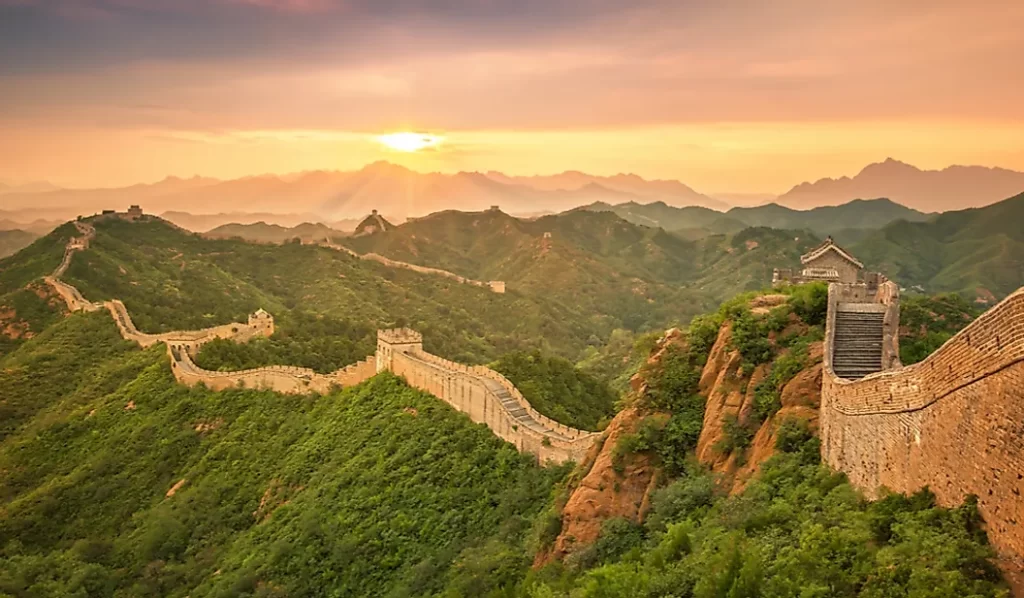Architecture, a tool for human segregation
In the last 50 years, scholars preoccupied with the issue of segregation have investigated in depth major factors that lead to people’s separation, both within and outside the law. New interpretations of how humans use architecture and urban construction tactics have shifted from being a savior factor from poverty and insecurity to a constraint element, capable of creating physical boundaries and social class separation. Even though the constant battle against discrimination of any kind has had many positive effects visible with the bare eye, human inequality was reinforced over time by less visible tools such as urban design. Just like a knife with two cuttings, architecture as a form of built environment intends to create for people an organized place to live but also succeeds in establishing limits with a powerful psychological impact.
GET MORE FROM LEVEL

Walls, fences and main roads have separated territories since the birth of civilization, have protected against invaders and have established limits. In the past things were quite straightforward and decisions were made much faster, according to regional politics. If someone was not welcomed into the community, gates would simply not open and thus, the person had to search for another place to live or stay. Democracy brought improvement to the old system and over time communities have become more tolerant and accepted change more easily. In terms of the labor force immigrants have always played an important role in the development of powerful countries. But their presence was sometimes contested, accepted, or separated. A famous example is the situation of the Jewish who lived throughout Europe in a separate walled area. Over time the collective opinion about immigrants improved as well as their living standards, access to better education, or income.

Meanings of Borders
One of the new wonders of the world and a UNESCO site since 2007, the Great Wall of China is the perfect example of urban architecture designed to separate two worlds. Of course, back in the Antiquity Chinese people erected these constructions to defend themselves against various nomadic groups from the Eurasian Steppe. The idea of creating physical thresholds like the Great Chinese Wall is in itself a revolutionary idea that succeeded to keep away foreign invaders. Of course, in the past architecture served to build many borders for military and political purposes. In Antiquity security and peace depended much on the ability of the king to defend his territorial borders.
Nevertheless, thresholds have also a symbolic meaning. In many cultures of the world constructions such as miniature houses or small altars placed in strategic points act as both physical and symbolic borders. Their purpose is to warn people to stay away and to purify the area of any evil spirits. The word itself – border – comes from the old French “bordeure” which means edge, boundary, involving two concepts at the same time. The first one refers to a physical boundary such as a wall or a fence, but also as the edge of something more profound and not necessarily touchable. We can think at the edge of the world, the edge of the universe, the edge of death. Thus, the border is less visible and implies other significances.
In a similar way, symbolic borders occur among people of different cultures, languages, mentalities, and lifestyles. Even when we make new friends, it’s important to be on the same side of the story and share similar values. Otherwise, these intangible thresholds separate people. In some societies, if differences are too much for the majority, symbolic borders are often accompanied by physical ones. In modern times, architectural thresholds ingeniously created barriers that segregate entire communities. Political forces are a major factor that dictates the future of an area and their decisions will perpetuate segregation or harmony inside a community.

Racial architectural segregation
Robert Moses was appointed in New York from the early to mid-20th century as the main urban planner of the city. His infrastructural projects and philosophy on urban development shaped the city’s metropolitan area but Moses also made some controversial decisions throughout his career. One of the most debated decisions is connected to the height of the overpasses on the Long Island parkways. Most of the passes are built very low and no buses could pass under them. Critics say that the low-hanging overpasses were intentionally built like this to keep away poor people and people of color, who often relied on public transportation. Thus, access for black and poor people was restricted in the area of Long Island, especially the public park at Jones Beach.
In Atlanta, Georgia, white residents opposed to the extension of the metropolitan subway system because otherwise poor and color people would have gained access to suburban communities. In Memphis in 1974 local authorities closed off a street that connected an all-white with a black neighborhood. Many more similar examples include one-way streets, construction of walls, no crosswalks, locations of highways and transit bus stations or residential permit requirements. Although in a subtle way, the decisions such as the ones described above became an instrument for keeping certain segments of population separated from others. Some critics name this type of use of built environment “architectural exclusion” or “choice architecture” as these measurements are less obvious exclusionary practices. To encompass all branches of architecture that can constrain, scholars include civil engineering, city planning and transportation routing. Architecture regulation is a powerful instrument in the hands of authorities but it’s less explicit and less identifiable. This is the reason why many of these constructions are not taken much into consideration by lawmakers.
Social status or creative architecture
Many researchers today study the impact of man-made physical features that control in a certain way access of some people to particular areas or neighborhoods. Architecture speaks a lot about the status of a city and its features can influence who lives in it. Even though globally the social and economical situation improved, there are new tools that can still separate people that live even in the same city.
Nowadays, when the population has reached a peak when traveling is much more affordable and immigration is a characteristic of contemporaneity, these new tactics of segregation have become particularly obvious. Elements such as street layouts, the absence of sidewalks, and no public transit are some of the most common examples of contemporary factors that can shape the demographics of a city and limit access within it. Recent history shows that most of these limits were aimed especially against black, latino, or poor communities. Black and white segregation has existed not only in America but also in the UK or Africa (ex. Johannesburg).
From this point of view, architecture acted as a form of regulation that constrains human behaviors, most of the time without realizing it. Although in America the law has addressed the impact of restrictive zoning ordinances with exclusionary results, it seems that most legal scholars and courts haven’t really paid attention to these features, thus creating cultural gaps between urban areas and designing “preferred” neighborhoods where most black/ immigrants/ poor people live.
Neutral design
Some projects might seem like simple urban aesthetic decisions such as park benches divided into three individual seats. But on second thought, maybe this design was conceived to forbid homeless people to sleep on them. Although not all urban design is exclusionary, it is obvious that architecture can regulate and control human behavior. It is necessary that architects think deeply when creating urban designs so they can become facilitators for equal access to a physical space for all. When it comes to limiting access to minorities or poor people in rich areas of America, it is mostly due to prejudice, thus a mental barrier. Many times the prejudices became law and materialized in restrictive covenants and exclusionary zoning.
Nowadays, many examples of architectural exclusion are seen by locals as mistakes and the American law declared most forms of exclusion illegal. Some planning departments belonging to progressive cities take new criteria into consideration when it comes to the newly built environment but the already constructed architecture cannot be so easily torn down. More than this, currently no law forces local governments to reconfigure their infrastructures.
It is clear that architecture needs to change. In terms of future structures, many city planners consider new ideas to prevent exclusionary architecture. However, the regulatory nature of architecture and its implementation raises many questions about legality, social equality, and accessibility for all citizens. Scholars debate and bring forward to the public attention many issues viewing the built environment in the hope that architecture will not divide but bring together people across communities.

Leave a Reply